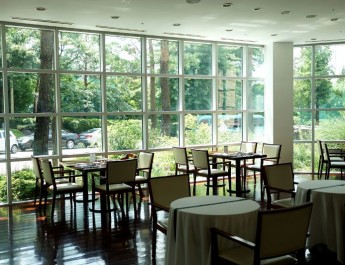Blinds have become increasingly popular as a window treatment option for homeowners and businesses alike. They come in a variety of materials and styles, and can be custom-fit to any size window. But before investing in blinds for your interior design project, it’s important to weigh the pros and cons.
In this article, we’ll explore the history of blinds, the different types of blinds available, and the advantages and disadvantages of using blinds in your interior design project.
History of Blinds
The history of blinds dates back to ancient Egypt, where they were used to provide shade and privacy in homes. Early blinds were made from reeds or woven bamboo, and were simple and functional.
Over time, the use of blinds spread throughout the world. In Europe, blinds were made from wood and were often intricately carved and decorated. In Japan, bamboo blinds were popular, and were often used as a room divider.
Today, blinds are available in a wide range of materials, including wood, metal, vinyl, and fabric. They are versatile and functional, and can be used to add style and texture to any room.
Types of Blinds
There are many different types of blinds available on the market today. Here are some of the most popular options:
-
Vertical Blinds: Vertical blinds are a classic choice for large windows and sliding glass doors. They consist of vertical slats that can be rotated to adjust the amount of light that enters the room. Vertical blinds come in a variety of materials, including vinyl, fabric, and wood.
-
Horizontal Blinds: Horizontal blinds are a popular option for smaller windows. They consist of horizontal slats that can be raised or lowered to adjust the amount of light that enters the room. Horizontal blinds are available in a range of materials, including wood, metal, and vinyl.
-
Roller Blinds: Roller blinds are a simple and functional option for any room. They consist of a single piece of fabric that rolls up and down to adjust the amount of light that enters the room. Roller blinds are available in a range of colors and patterns, and can be customized to fit any window.
-
Roman Blinds: Roman blinds are a popular option for bedrooms and living rooms. They consist of a single piece of fabric that folds into pleats when the blinds are raised. Roman blinds are available in a range of fabrics, including cotton, linen, and silk.
-
Pleated Blinds: Pleated blinds are a modern and stylish option for any room. They consist of a piece of fabric that is pleated to create a textured effect. Pleated blinds come in a variety of colors and patterns, and can be customized to fit any window.
Advantages of Blinds
-
Light Control: Blinds allow you to control the amount of light that enters the room. You can adjust the slats or fabric to let in as much or as little light as you like. This is particularly useful for bedrooms, where you may want to block out as much light as possible to promote restful sleep.
-
Privacy: Blinds provide privacy by blocking the view into your home or office. This is particularly important for ground floor rooms, where passersby may be able to see inside.
-
Versatility: Blinds are versatile and can be customized to fit any size or shape of window. They come in a range of materials, colors, and patterns, so you can choose a style that complements your interior design scheme.
-
Durability: Blinds are durable and long-lasting. They are easy to clean and maintain, and can withstand years of use.
-
Energy Efficiency: Blinds can help to reduce energy costs by providing insulation against heat and cold. They can help to keep your home warm in the winter and cool in the summer, reducing the amount of energy needed to heat or cool the room.
-
Cost-Effective: Blinds are often more affordable than other window treatment options, such as curtains or shutters. They are a cost-effective way to add style and function to any room.
Disadvantages of Blinds
-
Limited Style: While blinds come in a range of materials and colors, they may not offer the same level of style and design options as other window treatment options, such as curtains or shutters.
-
Maintenance: Blinds require regular cleaning and maintenance to keep them looking their best. Dust and dirt can accumulate on the slats or fabric, which can be difficult to remove.
-
Noise: Blinds may not provide the same level of soundproofing as other window treatments. They can allow noise to enter the room, which may be a concern for those who live in noisy areas.
-
Fragility: Some types of blinds, such as those made from fabric, may be more fragile than other options. They can tear or become damaged easily, particularly if they are not handled with care.
Choosing the Right Blinds
When choosing blinds for your interior design project, it’s important to consider your specific needs and preferences. Consider factors such as the size and shape of your windows, the amount of light you want to let in, and your overall design scheme.
You should also consider the different materials and styles available, and choose an option that best fits your needs and budget. It’s a good idea to consult with a professional interior designer or window treatment specialist to help you choose the right blinds for your home or office.
In conclusion, blinds can be a great choice for any interior design project. They offer a range of benefits, including light control, privacy, versatility, durability, energy efficiency, and cost-effectiveness. However, they also come with some disadvantages, such as limited style options, maintenance requirements, noise concerns, and fragility.
By carefully weighing the pros and cons of using blinds in your interior design project, and choosing the right style and material for your specific needs, you can create a stylish and functional space that meets all of your requirements.




